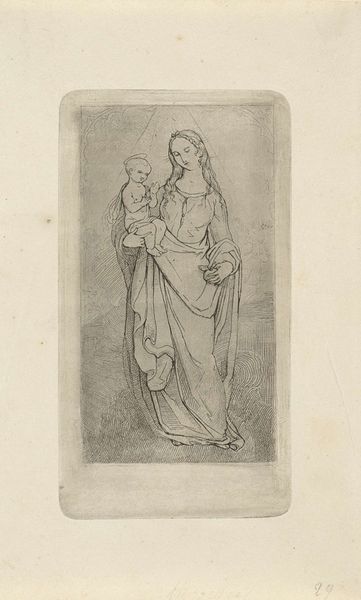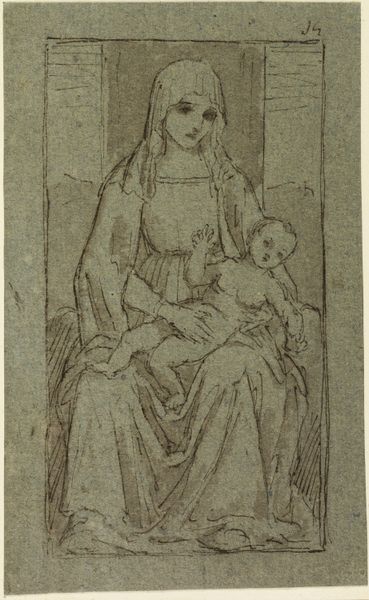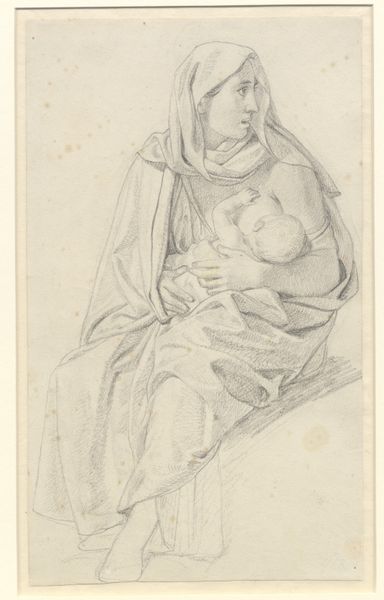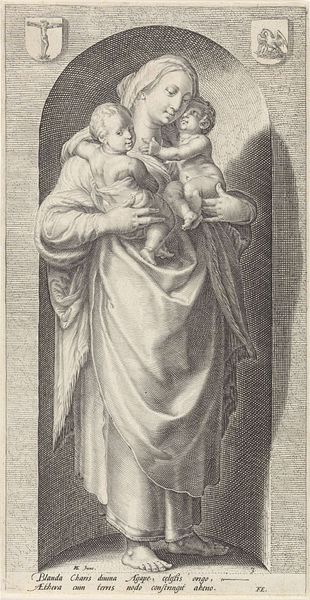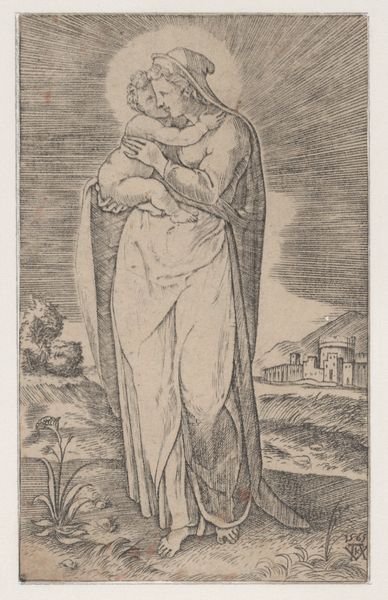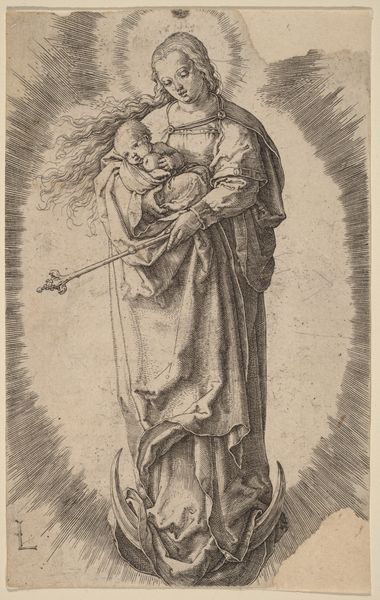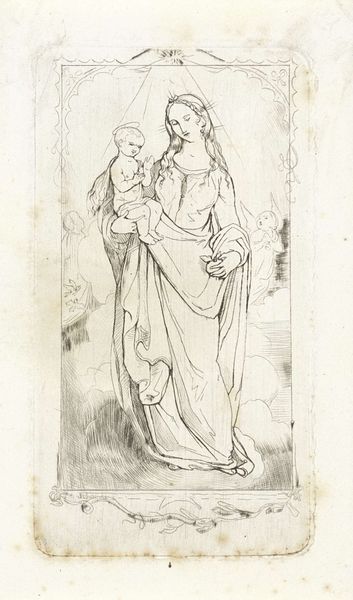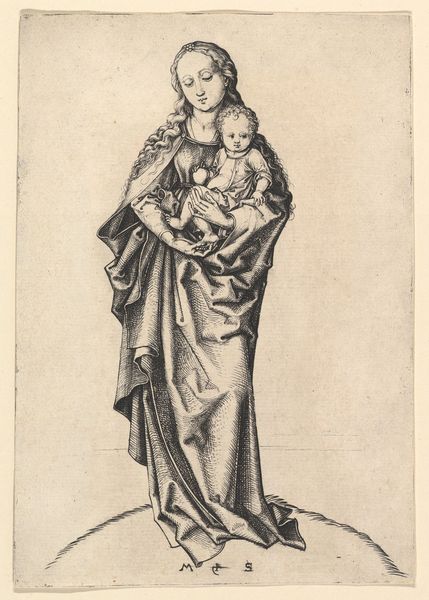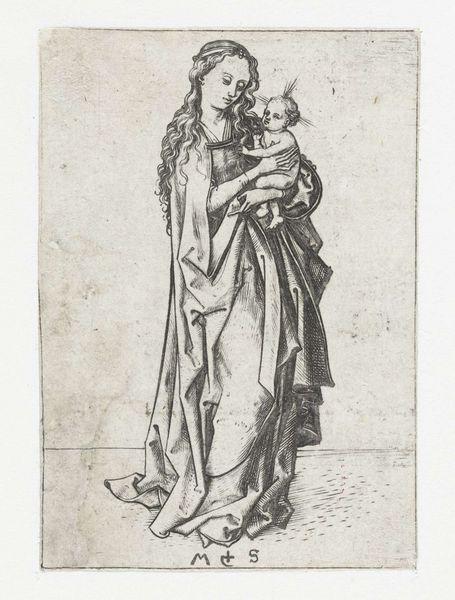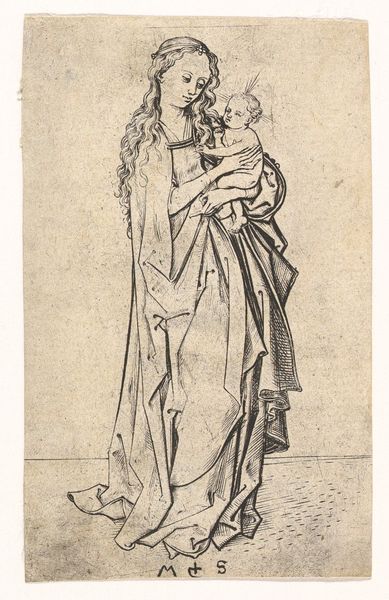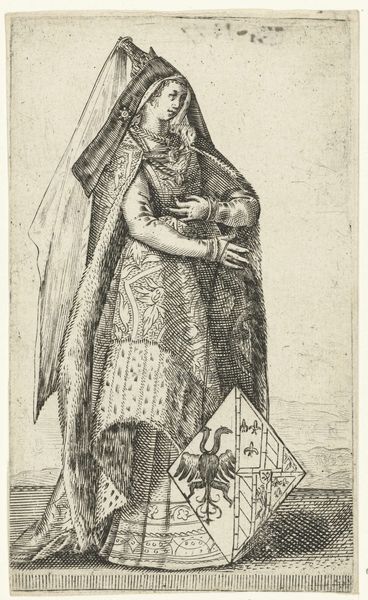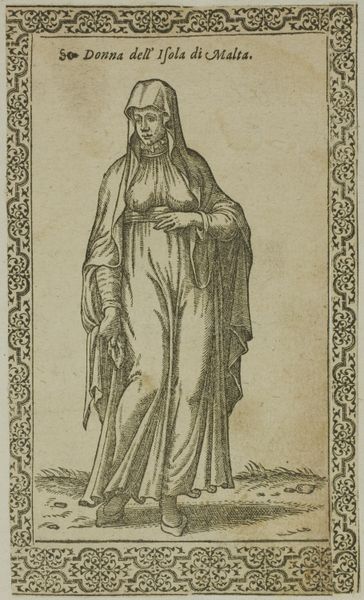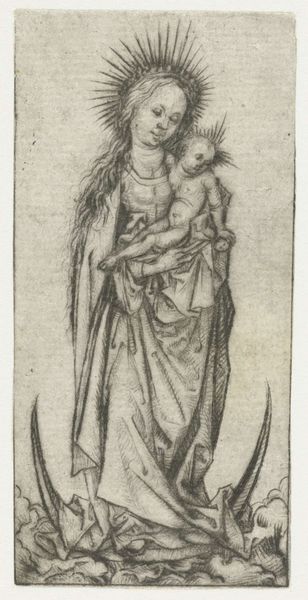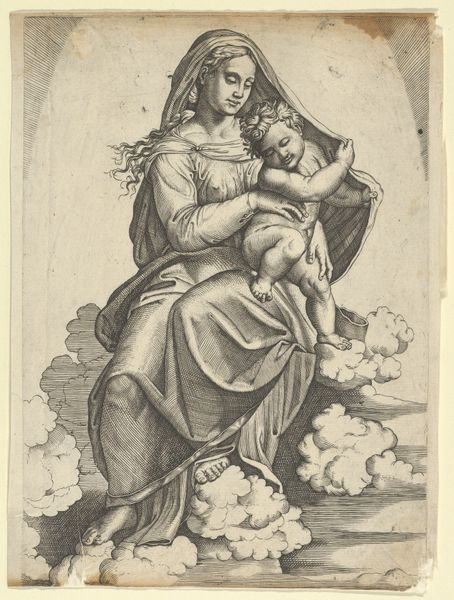
print, engraving
#
portrait
# print
#
old engraving style
#
figuration
#
engraving
Dimensions: height 188 mm, width 126 mm
Copyright: Rijks Museum: Open Domain
Curator: Arnoud Schaepkens created this engraving titled "Maria, Sterre der Zee," sometime between 1831 and 1904. It’s a rather stark, precise figuration of the Virgin Mary. Editor: She looks a bit severe, doesn't she? Like a mother scolding you with her eyes, all the while still holding you close. It’s a striking contrast, especially given the medium—that fine, disciplined line work. Almost unforgiving in its detail. Curator: I think the “unforgiving detail” stems from its function. These kinds of engravings often served documentary purposes, capturing architectural or sculptural details with a degree of accuracy. Note the 'Style Ogival' inscription. Editor: Ah, that's right! I was too caught up in her judgmental stare. It makes total sense; it's almost like an architect's blueprint but infused with this spiritual... chill. Do you think this was based on an actual sculpture then? Curator: Precisely! My reading suggests the engraving aims to precisely depict a specific sculpture – "La Vierge des Récollets". The social context is deeply rooted in documenting religious art and architecture, and disseminating those records in reproducible print form. Consider also the accessibility prints afforded compared to large sculptures and physical pilgrimages. Editor: It makes me wonder who owned a copy, who would see this and think about that faraway Madonna. Almost like a spiritual postcard! Also, look at that tiny church tucked into the corner of the piece, behind her. Curator: A clever inclusion by the artist! See, in material terms, it enhances not only the scale but provides grounding in time and place. It anchors her within the specific location where this sculpture would have resided—connecting the devotional image to tangible architecture. Editor: So much to see here beyond just piety! From sharp architectural notes to human tenderness – all translated to line on a copper plate. Curator: Yes, looking beyond simply what is represented allows the means of production to speak, enabling a deeper engagement that highlights class, access, and distribution networks. Editor: I’m walking away with a whole new perception, really. This is far from just another static religious icon; it’s a little piece of reproduced history in our hands.
Comments
No comments
Be the first to comment and join the conversation on the ultimate creative platform.
